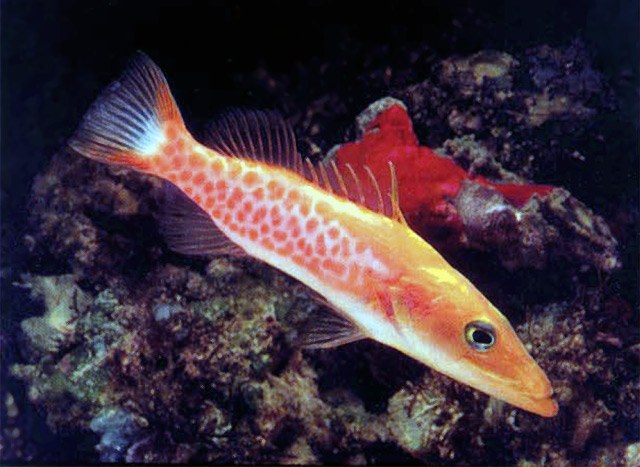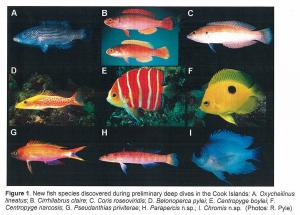
Belonoperca pylei (seen above), Centropyge narcosis, Centropyge boylei, Pseudanthias privitera: Who knows what new deepwater fish species Richard Pyle et al. will discover? Photo by R.L. Pyle
Exploratory deep sea reef research gets funding from Seaver Institute
University of Hawaiʻi
Director of Communications, University of Hawaii Foundation

The Seaver Institute has awarded the Hawai‘i Institute of Marine Biology (HIMB), School of Ocean & Earth Science and Technology at the University of Hawai‘i at Manoa $100,000 to fund comparative reef research at multiple Pacific locations using advanced rebreather technology. This award and the new dive technology will make it possible for researchers to study previously inaccessible sites.
“Coral reefs are among the most diverse and severely threatened ecosystems on Earth,” said Jo-Ann Leong, director, HIMB. “To date reefs have been found up to a depth of at least 165 meters (m) in the Pacific, but only the upper 30 m has been studied. These deeper reefs are largely unexplored because of the limits of scuba technology, so the biodiversity of more than 80% of the depth range of coral-reef habitat remains almost completely unknown. These rich coral habitats are emerging as a strong priority for management agencies and conservation organizations.”
To learn more about these rich coral habitats, HIMB’s research professor Brian Bowen and Richard Pyle, associate zoologist, database coordinator, and diving safety officer for the Bishop Museum, are embarking on a three-year study using advanced rebreather technology to discover, document and characterize deep coral reefs at three locations across the Pacific Ocean. This study complements a pilot study currently underway in Hawai‘i. These expeditions will allow researchers to record high-definition video, collect specimens for new species documentation and various lab-based analyses, and estimate biodiversity levels.
“There are two urgent concerns about how these deep coral reefs serve coastal communities around the world,” said Bowen. “First, they may be refuges that can replenish depleted fisheries and other resources in shallow reefs. Second, because these reefs operate with about 1 percent of surface light, coastal pollution that blocks sunlight may be lethal before we even know they exist.” Bowen concluded, “Funding from the Seaver Institute will help us document this incredible trove of unknown biodiversity, and provide momentum for research and conservation.”
Please contact Lisa Ottiger at [email protected] or 956-3592 to learn more about supporting HIMB’s conservation research.









0 Comments